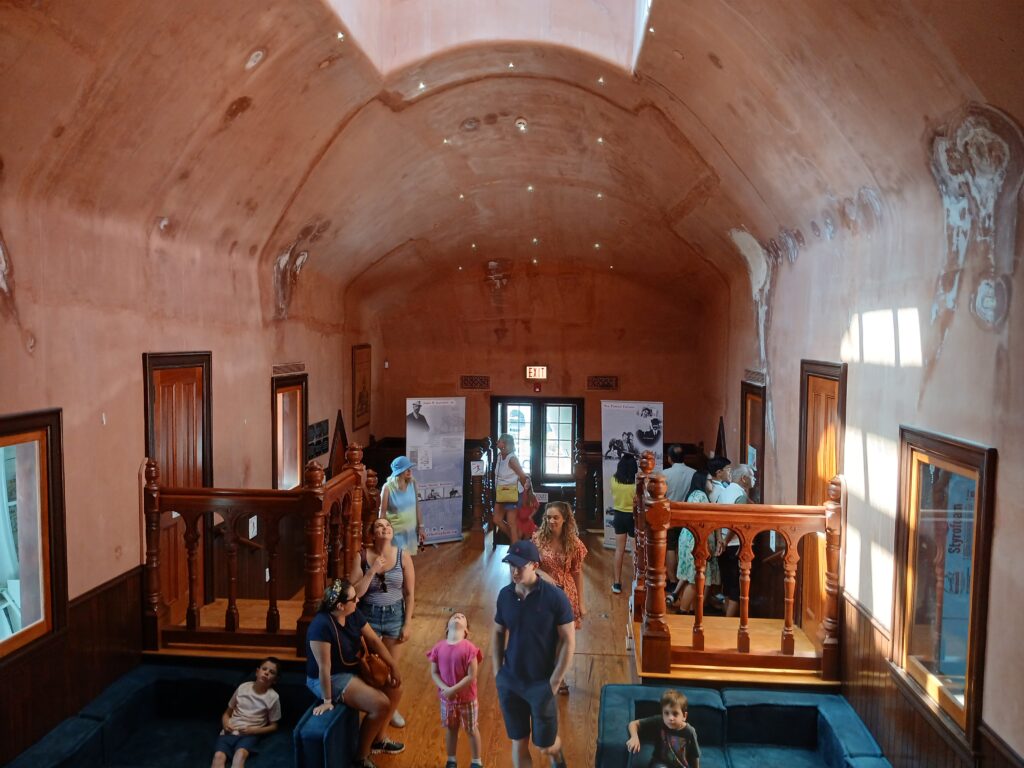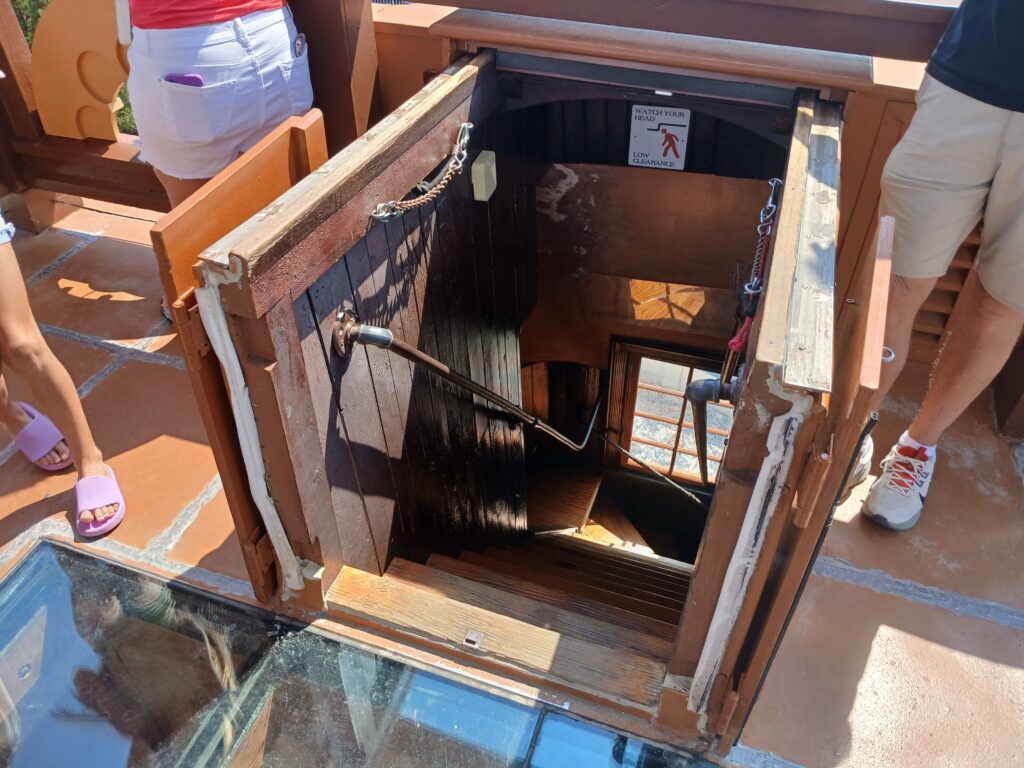If you’ve been in the Atlantic City area, you probably have heard about or seen Lucy the Elephant. Touted as the top roadside attraction in America, Lucy has been around in various forms since 1881, in Margate – just south of Atlantic City.

Lucy was the dreamchild of land speculator James Lafferty Jr., to help sell real estate in the Atlantic City area. He would bring people up into the howdah (the basket on top) so they could survey the land.
You can visit Lucy the Elephant with kids. Details below.

The elephant was supposed to cost $25,000 to construct but ended up costing $38,000. There are 2 other elephants similar to Lucy. One was in nearby South Cape May, building beginning in 1884. It was also used for real estate purposes, but that elephant only lasted til 1900. The third elephant, also built by Lafferty, was in Coney Island. It cost an estimated $65,000 and was 122 feet high – with 7 floors of exhibits and rooms. It caught fire and that elephant was gone in 1896.

During the guided tour you’ll climb up Lucy’s leg into her body.

You’ll have some time to explore the interior (it’s air conditioned) and there’s a short video about her history.

Lucy was sold to the Gertzen family after Lafferty was done. Daughter Sopha gave the elephant the name Lucy (we don’t know why Lucy was chosen).
At one point Lucy was a summer home – the main hall became 4 bedrooms, the kitchen, dining and parlor. The bathroom was in a front shoulder – you can see a small clawfoot bathtub in there today.

We could see patches inside with discolored plaster, where water had seeped through. You can see those on the interior pictures on this post.

Sophia Gertzen, who named the elephant Lucy, used her as a tourist camp (which turned into a tent city) in 1916, as the funds supported her raising her kids. She later turned the nearby pavilion into a rooming house, and then started charging 10 cents for people to tour Lucy.

Lucy was also a tavern, but this was problematic as oil lanterns were used for light – and you can imagine what happens when drunk people are around oil lanterns in a cozy structure made of wood. She almost burned down in 1904.

Given her proximity to the beach, Lucy has required a lot of upkeep over the years. In 1903 she had to be moved further back from the ocean as a storm covered her knee-deep in sand. In 1920 another storm tore off the howdah. An expensive renovation was needed in 1974 as well, to restore her. A new restoration is needed now, to take place in 2025.

During the tour, you’ll be taken up her side into the howdah for a 360 degree view.

Lucy now belongs to the City of Margate, and a committee formed to raise funding for her. Lucy is also on the National Register of Historic Places, and can receive federal and state matching grants.

She was moved to city-owned property 2 blocks away from where she originally lived, in 1970. When I say 2 blocks, it’s much shorter than you would imagine if you look at it from the howdah (the apartment building land was her initial home). But that move took a whole day, putting Lucy on wheels and moving the electrical wires to do so.

Visit Lucy the elephant with kids
Tickets: At posting, tickets for Lucy the Elephant are $8.50 for those 12+ and $4 for ages 3-12. It’s free under age 3, but they still need a ticket. No cost for U.S. military members with valid identification.

Tours: Guided tours are needed, so make sure you have flexibility in your schedule when getting your ticket as you may have to wait for a later tour. They are every 45 minutes. Tours are 20-25 minutes.

Accessibility: Lucy’s interior is not stroller or wheelchair accessible. To get to the top of Lucy, there are 130 steps, not surprisingly in several phases and very windy.
Have you visited Lucy the elephant with kids? What did you think?

